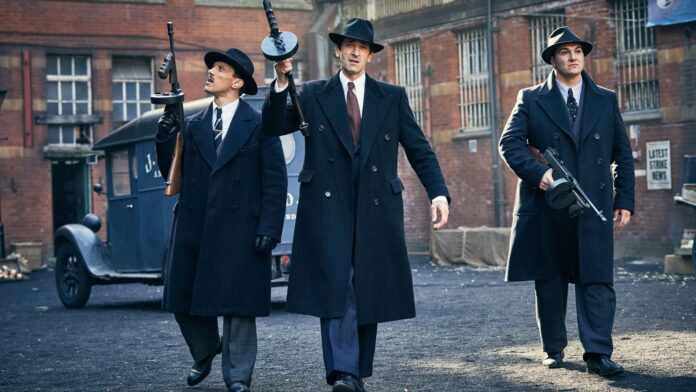Peaky Blinders, the hit BBC show, was based on real-life Birmingham gangsters from the late 19th century. The grim plot mirrors the dark reality of gang life during that time.
The real Peaky Blinders terrorized Birmingham from the 1880s to the 1910s, fueled by poverty and gang culture.
While the character Thomas Shelby is fictional, the gang’s activities were equally violent and dramatic. Historian Professor Carl Chinn’s research sheds light on the gang’s origins and their impact on the community.
The Rise of the Birmingham Gang
Following the Peaky Blinders, the Brummagem Boys emerged as a powerful pre-war gang in Birmingham. By the 1920s, The Birmingham Gang took over, led by figures like Billy Kimber, as depicted in the show. These gangs were feared and notorious across the country.
Professor Chinn’s work highlights the significance of Birmingham’s history in shaping these criminal organizations and their lasting impact on the city.
He commends the show for capturing the essence of Birmingham’s past, including iconic locations and historical references.
The Legend of the Peaky Blinders
The name “Peaky Blinders” allegedly came from the gang’s practice of sewing razor blades into the peaks of their caps. This allowed them to easily slash their enemies during fights. The gang’s female counterparts also had a distinctive style, adding to their menacing reputation.
However, Professor Chinn debunks the myth of the razor blades, pointing out the luxury and impracticality of such a practice. The romanticized version of the story in popular culture differs from the historical reality of the gang.
Despite the discrepancies, the show’s portrayal of strong women and gritty gangster themes resonates with the audience and sheds light on Birmingham’s complex history.
Where to Watch Peaky Blinders
Peaky Blinders aired on BBC One and BBC Two from 2013 to 2022, spanning six seasons and 36 episodes. Fans can catch up on the series on BBC iPlayer or Netflix for a binge-worthy experience.

